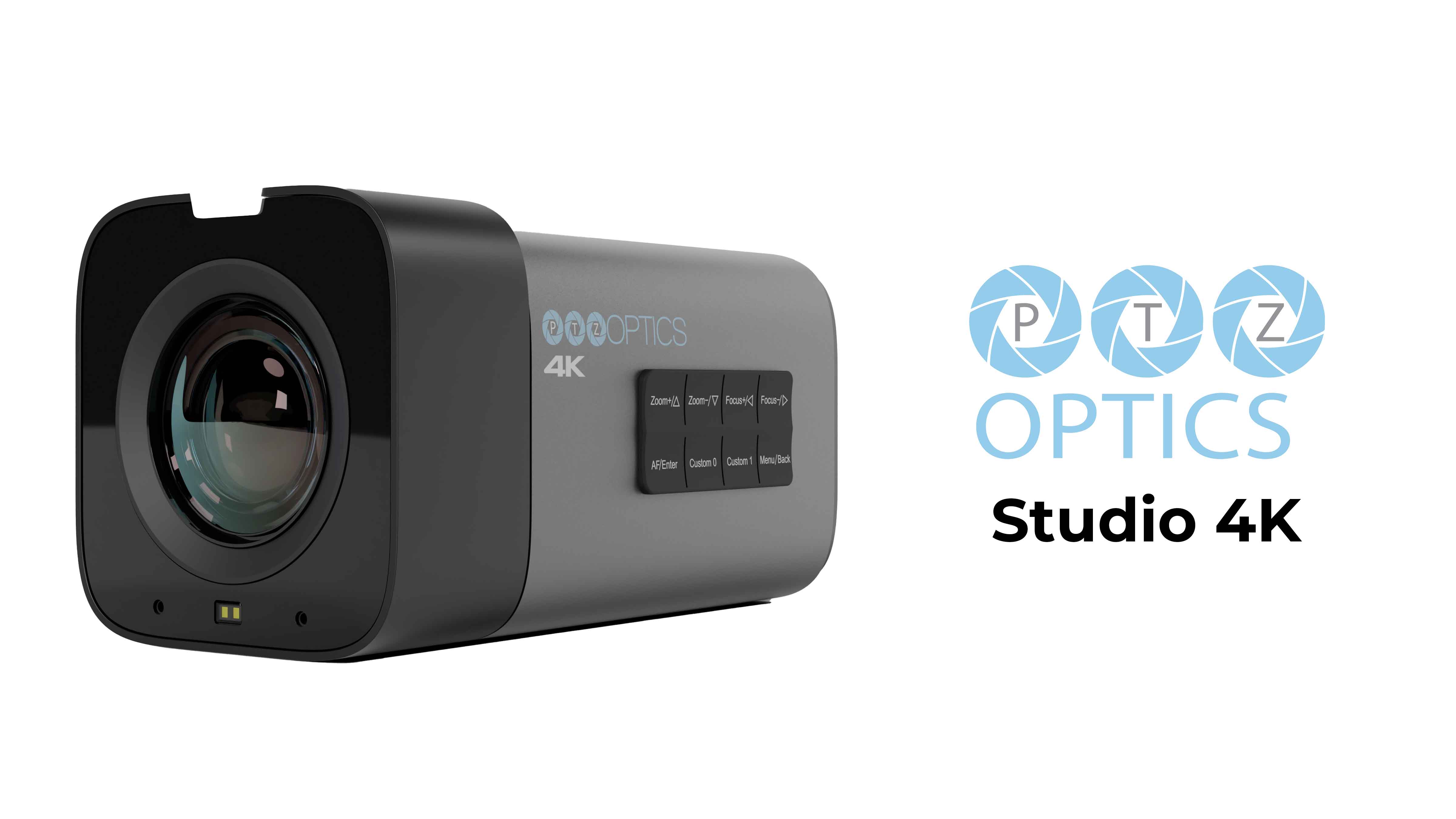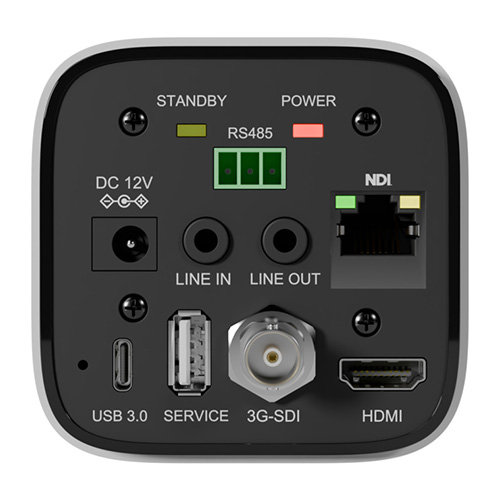Product Review: Think Outside the 'Box'
With extensive features and solid images, the new PTZOptics Studio 4K might change your opinion about fixed cameras.

When you think versatility, you usually don't think about a box camera. But the new PTZOptics Studio 4K camera is changing the fixed camera conversation.
[Striving for Sustainability Success]
The Studio 4K's 1/2.8-inch, 8MP CMOS sensor delivers 4K, Full HD, 1080i, and 720p via HDMI, as well as 1080p, 1080i, and 720p via SDI. It can livestream H.264/H.265 video on a network or record the footage to an external source. Supported protocols include NDI HX2, SRT, RTSP, HTTP, TCP/IP, and more.
Operating independently or with other cameras on PTZOptic’s Hive Studio online platform, the camera provides a 72.5-degree angle of view and features a 12x optical zoom. (A 20x model is also available.) Other features include a built-in tally light, so it's ready for multi-camera setups, and a built-in beamforming microphone. And the camera itself is less than 6 inches long and weighs about 1.5 pounds.

Facing the camera, both the left side and bottom sport wall mounting screws. The rear panel has a green LCD standby and red LED power light. There’s also a 12-volt DC input, 3.5mm I/O, USB service port, RS485 control port, and SDI, HDMI, USB, and IP outputs. The right side of the unit has soft buttons for menu access, zoom and focus (which double as directional buttons for menu navigation), auto focus, and two custom presets.
Small Package, Big Features
Press the menu button to display the menu in the upper right hand of the screen that offers options of exposure, color, image, PTZ, noise reduction, setup, information, restore default, and privacy mode. Exposure offers auto, manual, SAE, AAE, and bright options. A built-in meter allows you to choose the areas on the screen where exposure will be prioritized.
In the auto option, the exposure is automatically controlled and is extremely accurate. In the manual setting, you have access over the shutter speed, iris (which defaults at 1.8), and gain. In the SAE mode, you have options of shutter, gain limit, and DRC. access to various areas to check the exposure.
A daily selection of the top stories for AV integrators, resellers and consultants. Sign up below.
The color menu offers control over the white balance, including various modes as well as saturation and hue. The image portion of the menu provides access to luminance, contrast, sharpness, gamma, flip (horizontal and vertical), and more. Under the PTZ menu, you can shut off the digital zoom or restrict its use, set the zoom speed, freeze the image, and toggle between displaying information on the screen or not. The camera also offers 2D and 3D noise reduction at various levels.
The Studio 4K ships with a remote control with batteries, lens cap, AC adapter, and a USB-A to USB-C cable. The remote control is critical for the camera’s operation, especially if you want to adjust many of the menus or sub menus. Once you have the parameters you want, it's probably easier just to preset it. You can also access the same functions on the side of the camera—but depending on where it's installed, the remote is a much more convenient option.
Eye in the Sky
When I first plugged in the Studio 4K, I was literally stunned at the crisp image. It was superior to that from our $60,000 4K studio camera (granted, they've been around for almost a decade). On startup, the color balance and focus were perfect.
I immediately saw this camera as an overhead option in our 40x60-foot studio for an overhead wide shot for bumpers or credit rolls. Using the remote, you can zoom in or out to frame the exact shot you want. Of course, I would have liked some type of pan and/or tilt functionality, but this is a box camera, not a PTZ model.
In our studio, I mounted the camera in the upper right-hand corner of the room using the same mount that held our lesser-quality surveillance camera. The camera easily captured the entire room. So instead of relying just on three floor studio cameras, we now had a fourth camera that could show the studio audience as well as what was happening on our set. We used the 3G-SDI output from the back of the camera to connect it to our switcher.
The only things I didn't test were the Ethernet connectivity and the camera's integration with the PTZOptics Hive Studio online platform. We did use the HDMI port to connect the camera to one of our monitors. Using the remote, our floor manager would zoom in to a tighter shot of the studio audience, if needed. A joystick option would make this process more streamlined—and as it turns out, PTZOptics offers a few joystick controllers that'll do the trick.
The PTZOptics Studio 4K is a great camera choice to capture your static indoor wide shot in pristine 4K quality (though you can zoom, too). PTZOptics also offers the less expensive Studio Pro, which only offers Full HD resolution, but it might be all you need for your setup. Basically, either model is a set-it-and-forget-it option for studios, churches, city hall, and more. There's virtually no setup, plus it's compact and lightweight, delivers stellar images, and gives you total control of the recorded image.
Chuck Gloman, Associate Professor, has more than 40 years of experience as a producer and director of photography with more than 900 TV commercials, 250 corporate videos, and 100 documentaries to his credit. His films have aired on HBO, Cinemax, and network television. He is the author of Placing Shadows: The Art of Video Lighting, 2nd Edition (Focal Press: 2000); No Budget Digital Filmmaking (McGraw-Hill: 2002); 303 Digital Filmmaking Solutions (McGraw-Hill: 2002); 202 Digital Photography Solutions (McGraw-Hill: 2003); Placing Shadows: The Art of Video Lighting, 3rd Edition (Focal Press: 2005); Scenic Design and Lighting Techniques (Focal Press: 2006); Working with HDV (Focal Press: 2006); Placing Shadows: The Art of Video Lighting, 3rd Edition (translated in Japanese Language Focal Press: 2007); and Placing Shadows: The Art of Video Lighting, 3rd Edition (translated in Chinese Language Focal Press: 2017). He has published more than 500 articles.

